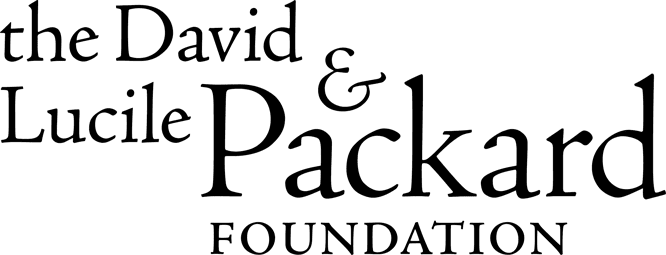JAPAN SUSTAINABLE SEAFOOD AWARD2025
FINALISTS
 Leadership Category
Leadership Category
The leadership category recognizes pioneering projects that exert leadership in innovative efforts to facilitate the sustainable seafood movement in Japan and/or other parts of Asia. These projects can be executed by one or more people or organizations.
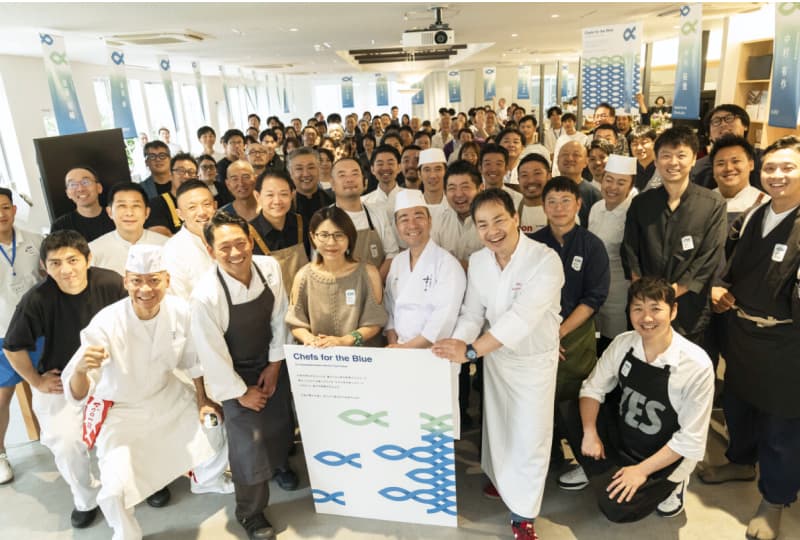
Chefs for the Blue: Passing Down Our Seafood Resources and Culinary Culture
Chefs for the Blue
Selection Reason
Through engagement with the foodservice industry, dialogues with the government, and educational activities, this project has enabled the participation of diverse stakeholders over the years. Its uniqueness lies in how chefs themselves raise awareness of the critical state of seafood and actively bring producers, distributors, and consumers together. Its efforts to reach out to younger generations provide additional strength to this project. As a next step, the project needs to become able to even more clearly link its activities with concrete sustainability-related impacts. To do so, further capacity development to be able to set specific goals and compile data to back their impact is anticipated.
Project Overview
Chefs for the Blue began in 2017 as a study group organized by a food journalist concerned about the critical state of Japanese seafood resources, bringing together top chefs in Tokyo.
An additional team was launched in Kyoto in 2021, and in 2024, the Blue Community, an online platform to reach out to the wider foodservice industry, was launched. Chefs for the Blue's diverse activities include the following: making policy recommendations; events led by its member chefs for the general public; the national award-winning Blue Camp, which is an educational program for students; and delivering the voices of 1,300 owners and procurement managers of restaurants to the government.
Through these efforts, Chefs for the Blue positions chefs as a vital link between producers, distributors, and consumers, toward the sustainable use of seafood resources.
Further information
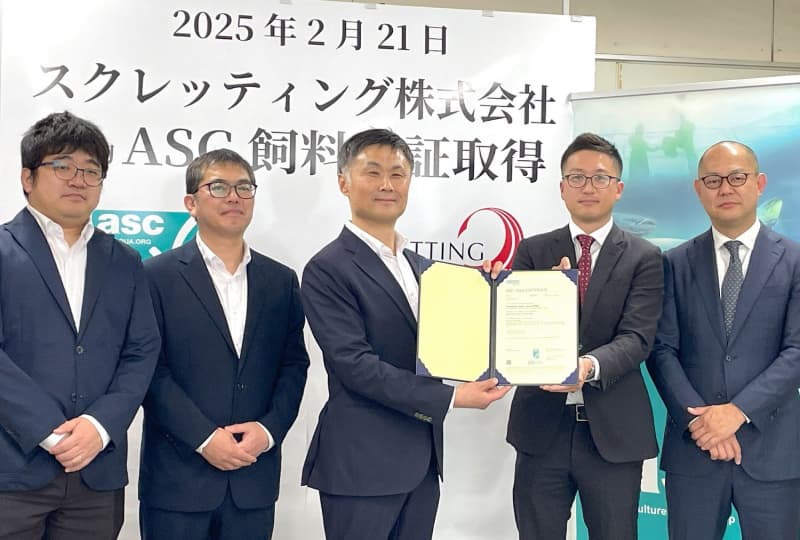
Paving the Way for Sustainable Aquaculture: Japan's First ASC-Certified Feed Producer
Skretting Japan
Selection Reason
Skretting Japan has opened up new possibilities for domestically produced sustainable aquaculture feed. This is a groundbreaking achievement, directly addressing resource depletion, IUU (illegal, unreported, and unregulated) fishing and human rights issues, and introducing international standards to Japan. Exploring ways to allow for this model to be widely adopted, as well as ways to achieve a better balance between sustainability and business viability across the industry, are some key areas for the next stage.
Project Overview
In February 2025, Skretting Japan became the first ASC-certified feed producer in Japan through collaboration with producers and suppliers. Many of the currently available aquaculture feeds rely on raw materials from unsustainable fisheries or agriculture, such as those sourced by IUU fishing or operators violating human rights, often contributing to resource depletion.
The project aimed to promote responsible sourcing and to break the vicious cycle between aquaculture, fisheries and agriculture. Through dialogue with ingredient suppliers and action taken during procurement activities, Skretting worked to ensure compliance with the environmental and labor requirements of the ASC Feed Standard, thereby ensuring world-class sustainability in the company's feed production. As it was long considered difficult for Japanese feed producers to become certified, this project is a milestone that has proven that business viability and sustainability can indeed go hand in hand in Japan.
Skretting will continue to contribute to the spread of ASC certification and support the sustainable growth of Japan's aquaculture industry.
Further information
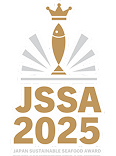
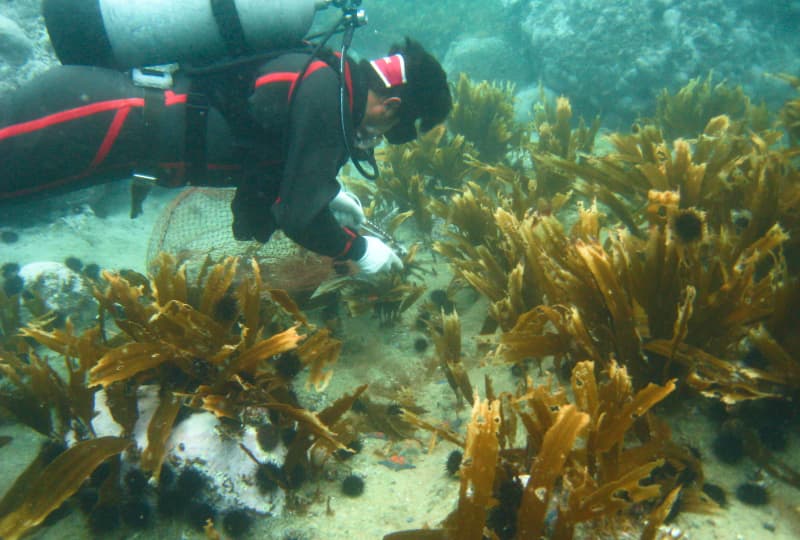
The Shakotan Method: A Positive Cycle of Restoring Sea Urchin Populations and Blue Carbon Cycles by Restoring Resource-circulating Kelp Beds
Blue Carbon Restoration Project Council of Shakotan
Selection Reason
With the unique Shakotan Method, this project has successfully restored kelp beds lost to "ocean desertification" with the help of the circularity of sea urchin resources/waste. The highlight of this project is how it has restored kelp beds and improved profitability of sea urchin fisheries through the use of discarded sea urchin shells as fertilizers, thereby reducing CO₂ emissions at the same time. This local model has great potential for application to other coastal areas where sea urchins are available.
Project Overview
In Shakotan, a small coastal town in Hokkaido, the loss of kelp beds due to ocean desertification once led to a sharp drop in sea urchin production, significantly impacting both fisheries and tourism. In 2009, local fishers started to restore kelp beds of the species Saccharina japonica var. religiosa (known as "hosome kombu" in Japanese). In 2019, they developed the Shakotan Method, which is a unique method that uses discarded sea urchin shells as fertilizers for kelpbed restoration.
By 2023, the project had restored about 1.5 hectares of kelp beds, leading to an increase in processed sea urchin production by 444 kg, which resulted in a 35.5-million-yen increase in revenue. This also led to a 6.4-ton reduction of CO₂ emission. This was certified by the J Blue Credit scheme, allowing for proceeds from credit sales to be used for further kelp-bed restoration. This circular model—reducing waste, restoring resources and generating economic benefit at the same time—is the first of its kind in the world and has attracted a lot of attention .
Today, the project has evolved into a core umigyo* initiative, managed by a public-private council. From 2025 onward, it aims to expand kelp-bed restoration and fertilizer production while working on local-community revitalization and measures against climate change through collaboration with the ecotourism industry.
*Diverse local economic activities collaboratively carried out by local fishers, fisheries organizations and other community members in order to address a range of challenges around fisheries, maritime and coastal communities today.
Further information
 Collaboration Category
Collaboration Category
The collaboration category recognizes impactful multi-stakeholder collaborative projects that take an innovative approach to drive change in Japan and/or other parts of Asia.
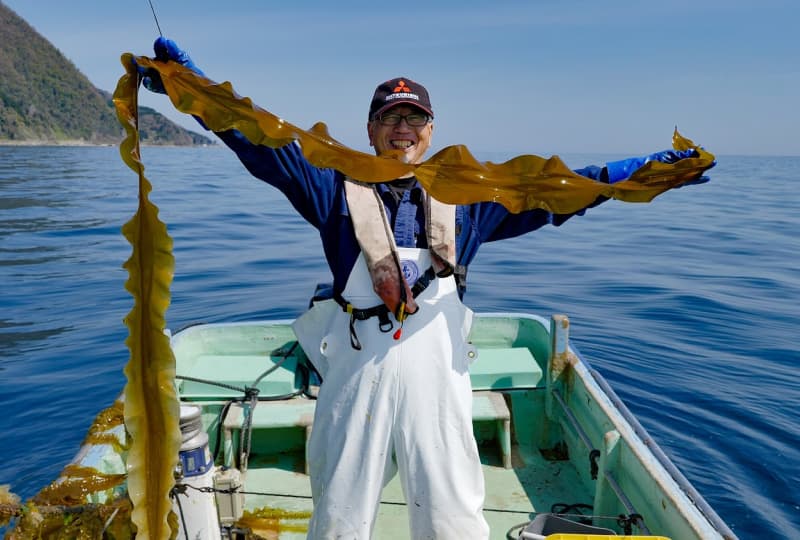
Exploring New Possibilities of Seaweed: A Project Initiated from Sado Island
The Sado Living Lab for Sustainability
Selection Reason
This project brings together a range of stakeholders, from fishers, researchers, local government officials to high school students for satoumi*1 restoration and local cultural revitalization , centered around seaweed. The activity that involves engagement with ama*2 from the Noto Peninsula is educationally valuable and demonstrates new ways to make the most of local resources. Further information sharing and the development of the project into a community-revitalization model centered around seaweed are anticipated.
*1 Coastal areas where biological productivity and biodiversity has increased through prolonged interaction between humans and ecosystems.
*2 (Mostly female) free divers who gather seafood, largely relying on traditional methods.
Project Overview
This project brings together a range of stakeholders, from fishers, local government officials, researchers, high school students, and restaurant owners for satoumi restoration and local cultural revitalization, centered around seaweed on Sado Island..
Throughout history, seaweed has been used in diverse ways–as food, fertilizer, building material, ritual offerings, and even toys–in Sado. However, environmental changes, population decline, and decreasing consumer demand for seaweed are threatening this traditional culture. The number of wakame farmers fell from 114 in 2013 to 48 in 2023. This project aims to slow down this decline and launch three new wakame-farming ventures. In addition to commonly used seaweed like wakame, kombu and nagamo, the initiative explores the use of underutilized seaweed species as well.
Collaboration with other coastal areas is progressing as well: after the 2024 Noto Peninsula earthquake, ama from Wajima (the largest city in Noto) joined the project to advance satoumi conservation and local cultural revitalization.
By sharing learnings from each of these activities and connecting those at the frontline of conservation, production and consumption, the project seeks to strengthen the seaweed food industry, enrich local livelihoods and realize healthy and sustainable satoumi.
Further information

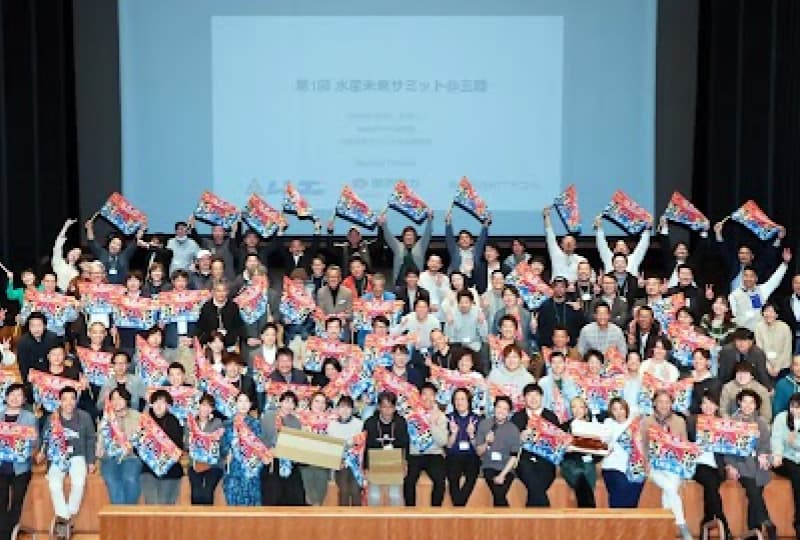
Suisan Mirai Summit: Fisheries Frontline Workers Shaping the Future of Japan's Oceans
Suisan Mirai Summit Committee
Selection Reason
This project not only brings together stakeholders from across Japan–including fishers, government officials and researchers–to have open and honest discussions, it has also been able to develop the discussed ideas into actual projects and policy recommendations. It provides an independent and innovative nationwide platform for co-creation, driving change from the frontline of fisheries. The project has the potential to become a model for other industries and regions. Key steps for the project to be able to continue to develop would be to make outcomes visible and present clear long-term strategies.
Project Overview
Suisan Mirai Summit is a collaborative professional retreat that brings together diverse stakeholders—from fisheries operators, seafood companies, local governments, researchers to NGOs.Participants actively discuss ways to transform the future of Japan's oceans from the frontline of fisheries, covering major challenges such as resource depletion, IUU fishing and marine environmental degradation.
The summit stands out not only as a platform for knowledge sharing across different regions and fisheries but also for translating discussed ideas into concrete actions: around 200 stakeholders joined the second summit, held in Tarumizu, Kagoshima, in 2025, and 22 projects were launched.
Policy proposals were produced as well. These were submitted to policymakers, leading to a budget-allocation increase for resource management and research.
The self-funded, independent nature of the summit and the genuine dialogue that it fosters among a wide range of participants–from women fishers, business leaders to specialists of social-issue solving–have lead to the launch of numerous collaborative projects. The third summit will be held in Noto, Ishikawa, in March 2026. The project aims to achieve nationwide fisheries reform by 2030.
Further information

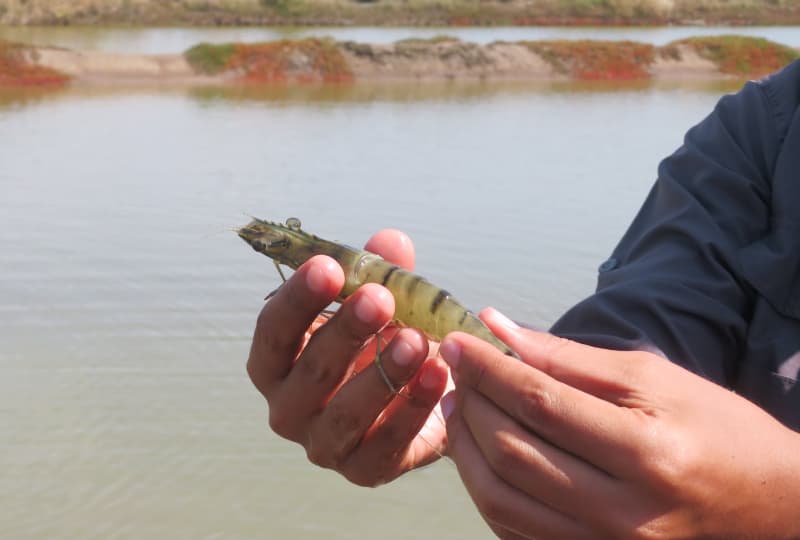
Indonesia Shrimp Aquaculture Improvement Project (AIP) – Phase III
Japanese Consumers' Co-operative Union (JCCU)
Selection Reason
By farming ASC-certified shrimps and restoring mangrove ecosystems in Indonesia through international collaboration, this project has built a sustainable aquaculture model. Despite the difficulties of black tiger shrimp farming, the project has continued to improve practices and successfully achieved both ecosystem conservation and the improvement of local livelihoods. This is a pioneering initiative in Asia. Further project development is expected so that the insight and knowledge gained over the years can be shared with Japanese businesses as well as being used for other aquaculture species.
Project Overview
The Japanese Consumers' Co-operative Union (JCCU), in collaboration with local shrimp processors, WWF Japan and WWF Indonesia, has been collaborating on sustainable black tiger shrimp farming that addresses both environmental and social issues. The project began in July 2017 and is now in its third phase.
In South Sulawesi and Central Java, aquaculture practices were improved to meet ASC standards. In March 2024, a farm in Central Java became ASC-certified, and ASC-labeled products were launched later that year in October. Currently, shrimp ponds of four producers, totaling 11.1 hectares, are certified and the project aims to increase this to 100 hectares and over 30 producers by June 2026. ASC standards require a survival rate of 25% or higher (from rearing pond to harvest) and the largest challenge was to meet this requirement. Through this project, the rate has improved from the initial 7–13% to the current 24–27%.
In Aceh, the project has supported improvements in broodstock fisheries, resulting in a fisheries management plan officially approved by the provincial governor. Today, about 30% of fishers in key fishing villages are licensed to catch broodstock.
Mangrove restoration efforts have so far covered 25.4 hectares, with successful root establishment confirmed on 16.2 hectares.
Through these efforts, the project aims to balance ecosystem conservation with improvements in local livelihoods, working toward the establishment of a sustainable fisheries model.
Further information
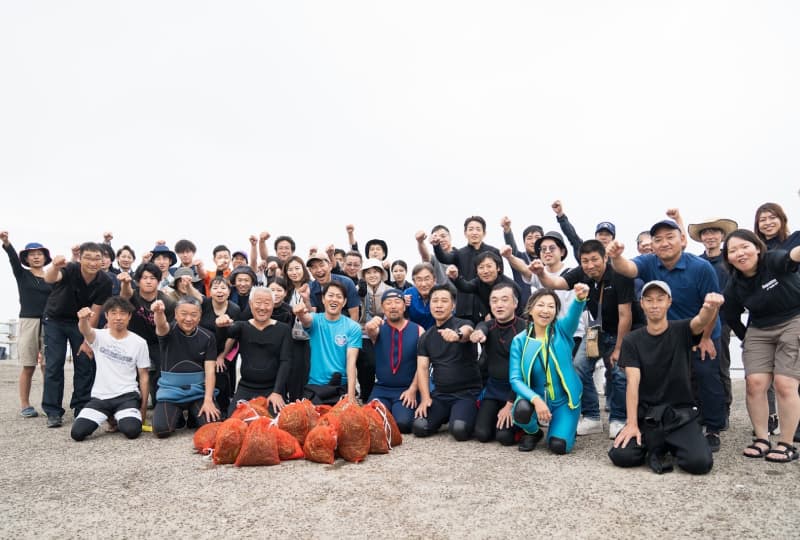
Yamakawa “Mother Sea” – Ibusuki Blue Carbon
Yamakawa Fisheries Cooperative Association
Selection Reason
The local fisheries cooperative leads a collaboration to improve blue carbon storage with local businesses, schools and the municipality. Original activities like creating new bento meals that use fish that eat away eelgrass are also implemented, gaining interest locally. As the project is still in its early stages, securing external support and finding ways to generate revenue will be key to sustainable project growth.
Project Overview
The southern limit of Japan's eelgrass beds lies in the coastal waters of Yamakawa, Ibusuki, Kagoshima. Led by the Yamakawa Fisheries Cooperative Association, the project brings together local businesses to restore and conserve eelgrass habitats. Eelgrass beds are nursery habitats and sometimes called the "cradle of life." In addition, as eelgrass captures CO₂ through photosynthesis, these habitats can store blue carbon and contribute to climate change mitigation.
In recent years, however, environmental changes and excessive grazing by fish have led to the loss of eelgrass beds, sometimes called "ocean desertification." In response, the Yamakawa Fisheries Cooperative Association, in collaboration with local businesses and schools, collected around 200,000 eelgrass seeds and planted them while protecting them with 49 biodegradable mats. An area of about 245 square meters has been covered.
The project also promotes environmental education and experiential tourism, raising local awareness of the importance of eelgrass beds. The Japanese Ministry of the Environment has certified the area as a site for contributing to the achievement of 30by30 . Furthermore, the project has also become the first project in Kagoshima to be certified by the J Blue Credit scheme (for the absorption of 0.4 tons of CO₂). On another note, the project is working on value creation as well, such as by using fish that eat away eelgrass to create new bento meals. These efforts are expected to serve as a sustainable model of local collaboration. It is hoped that the project can develop into a new model for sustainability through local collaboration.
Further information





